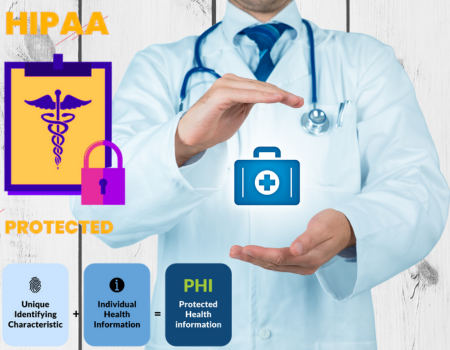New HIPAA Encryption Rules for Email & Text Message - Mandatory Exception for Patients
Speaker: Paul R. Hales
Speaker Designation: Health Privacy Attorney

Speaker: Paul R. Hales
Speaker Designation: Health Privacy Attorney

Regular (unencrypted) Email and Text Messaging containing Protected Health Information (PHI) are effective engagement and communication tools that patients like and have the right to use. However, unencrypted Emails and Text Messages containing PHI raise significant threats of medical identity theft.
This webinar will explain the simple 3-step HIPAA Safeguard that fully protects Covered Entities from HIPAA violations even when an unencrypted Email or Text Message is intercepted in transmission.
The Internet is awash with misinformation about Health Care Email and Text Messaging that can lead Covered Entities into serious trouble. Part of the problem is a common misunderstanding of how HIPAA defines PHI. It's much more than information about an individual's medical condition, prescribed treatment, diagnosis, or medications as the webinar will explain.
The Office for Civil Rights (OCR) of the U. S. Department of Health and Human Services administers and enforces HIPAA. OCR guidance clearly explains how Covered Entities must comply with a patient's right to communicate by unencrypted Email and Text Messaging.
The HIPAA Rules and a directive from the CMS Center for Clinical Standards and Quality/Survey & Certification Group also clarify when Covered Entities must encrypt Email and Text Messages that contain PHI.
On April 1, 2021, the U. S. Supreme Court issued a unanimous 'blockbuster' decision about the Telephone Consumer Protection Act (TCPA) that affects healthcare care text messaging. The webinar will cover that decision and explain why it did not give blanket permission to text patients at all. HIPAA is still in full force and effect.
The key takeaway is how Covered Entities can comply with the patient's right to receive unencrypted Emails and Texts containing PHI and protect themselves fully from HIPAA violations. Just a simple 3-Step Safeguard is all that is needed.
It also will explain when Emails and Text Messages containing PHI must be encrypted.
You will find out how to use and document the 3-Step Safeguard to protect your organization when communicating with patients by regular Email and Text Message.
The 3 Step Safeguard is a complete "Safe Harbor" from HIPAA violations and exposure to unquestionable, serious Risks if you don’t take advantage of this safeguard.
The new HIPAA encryption rules for email and text messages significantly enhance the security of patient information in electronic communications. By mandating encryption, these rules protect ePHI from unauthorized access during transmission. However, the mandatory exception for patients ensures they retain control over how they receive their health information, as long as they are informed of the risks and provide written consent. For healthcare providers, this necessitates balancing stringent security measures with respecting patient preferences, aiming to safeguard patient data while maintaining effective and patient-centered communication.
This webinar will be available soon. Please contact customer care for new schedule date.

Paul R. Hales, J.D. is widely recognized for his ability to explain HIPAA Rules clearly in plain language. He is an attorney licensed to practice before the Supreme Court of the United States, a graduate of Columbia University Law School, and a Senior Counselor of the Missouri Bar with an international practice in HIPAA privacy and security. Paul is the author of all content in The HIPAA E- Tool®, an Internet-based, complete HIPAA compliance solution with separate editions for Health Care Providers, Business Associates, Health Plans, and Third third-party administrators.